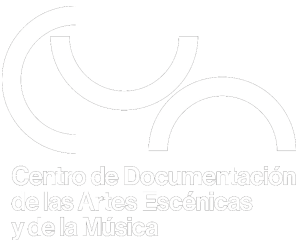Framing Turkish Dances TOMKO, Linda J.
Tipo de material: ArtículoDetalles de publicación: 2011 New York: Research Center for Music Iconography RCMI,Tema(s):
En: Music in Art : International Journal for Music Iconography Vol. 36, núm. 1,Spring-Fall 2011, p. 131Resumen: RESUMEN: The movement vocabulary and syntactical devices deployed for the dance in the Turkish Dance, a theatrical choreography by Anthony L'Abbé (created about 1721/22, recorded in Beauchamps-Feuillet notation, and published in London circa 1725), is used as a basis for unpacking the construction model of "Turkishness". In addition to tapping this choreographic frame for analysis, it weighs the "Turkish" associations created by the music used, its provenance, and connections to the period country dance The Great Turk. It further links the Turkish Dance to the interpretive frame afforded by two "travel books" by Nicolas de Nicolay and Charles de Ferriol from the later sixteenth and early eighteenth centuries. The article connects the wide circulation of images of cultural and occupational "others" effected by these works to L'Abbé's Turkish Dance and to the imaging and sorting of cultural, occupational, and theatrical "others" proffered by Gregorio Lambranzi's 1716 Neue und Curieuse Theatrialische Tantz-Schul. It suggests that L'Abbé's choreography and the imagery of Lambranzi's book emphasize and capitalize on motion as signifiers of cultural otherness and difference, and that by putting figures in motion, the choreographies they detail or offer recommendations for creating fashion relational interactions as a register for typing and categorizing people.
ArtículoDetalles de publicación: 2011 New York: Research Center for Music Iconography RCMI,Tema(s):
En: Music in Art : International Journal for Music Iconography Vol. 36, núm. 1,Spring-Fall 2011, p. 131Resumen: RESUMEN: The movement vocabulary and syntactical devices deployed for the dance in the Turkish Dance, a theatrical choreography by Anthony L'Abbé (created about 1721/22, recorded in Beauchamps-Feuillet notation, and published in London circa 1725), is used as a basis for unpacking the construction model of "Turkishness". In addition to tapping this choreographic frame for analysis, it weighs the "Turkish" associations created by the music used, its provenance, and connections to the period country dance The Great Turk. It further links the Turkish Dance to the interpretive frame afforded by two "travel books" by Nicolas de Nicolay and Charles de Ferriol from the later sixteenth and early eighteenth centuries. The article connects the wide circulation of images of cultural and occupational "others" effected by these works to L'Abbé's Turkish Dance and to the imaging and sorting of cultural, occupational, and theatrical "others" proffered by Gregorio Lambranzi's 1716 Neue und Curieuse Theatrialische Tantz-Schul. It suggests that L'Abbé's choreography and the imagery of Lambranzi's book emphasize and capitalize on motion as signifiers of cultural otherness and difference, and that by putting figures in motion, the choreographies they detail or offer recommendations for creating fashion relational interactions as a register for typing and categorizing people.
RESUMEN: The movement vocabulary and syntactical devices deployed for the dance in the Turkish Dance, a theatrical choreography by Anthony L'Abbé (created about 1721/22, recorded in Beauchamps-Feuillet notation, and published in London circa 1725), is used as a basis for unpacking the construction model of "Turkishness". In addition to tapping this choreographic frame for analysis, it weighs the "Turkish" associations created by the music used, its provenance, and connections to the period country dance The Great Turk. It further links the Turkish Dance to the interpretive frame afforded by two "travel books" by Nicolas de Nicolay and Charles de Ferriol from the later sixteenth and early eighteenth centuries. The article connects the wide circulation of images of cultural and occupational "others" effected by these works to L'Abbé's Turkish Dance and to the imaging and sorting of cultural, occupational, and theatrical "others" proffered by Gregorio Lambranzi's 1716 Neue und Curieuse Theatrialische Tantz-Schul. It suggests that L'Abbé's choreography and the imagery of Lambranzi's book emphasize and capitalize on motion as signifiers of cultural otherness and difference, and that by putting figures in motion, the choreographies they detail or offer recommendations for creating fashion relational interactions as a register for typing and categorizing people.
No hay comentarios en este titulo.

